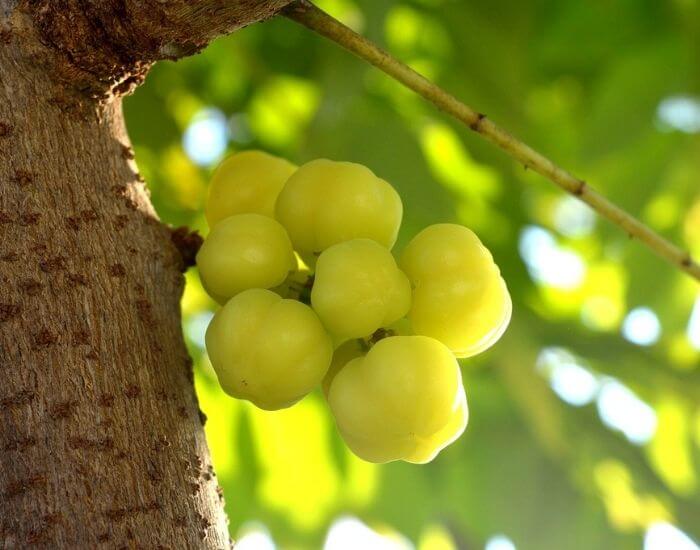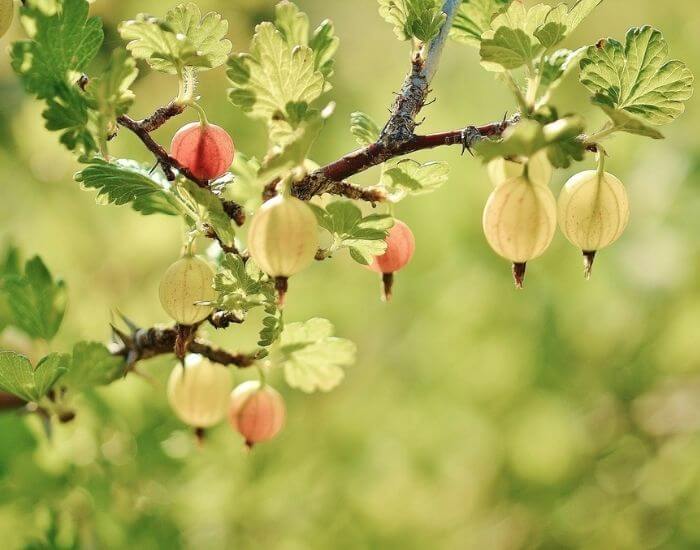Black sapote, also known as chocolate pudding fruit, is a unique and delicious fruit that has been growing in popularity in recent years. Native to Mexico and Central America, black sapote trees can now be found in tropical regions all over the world.
The fruit is about the size of an avocado and has a greenish-black skin that turns brown when ripe. Its flesh is rich and creamy, with a texture similar to custard or pudding, hence its nickname.
Sapote fruit is often used in desserts or eaten alone as a healthy snack. Its flavor has been described as reminiscent of chocolate mixed with dates or caramel. Despite its name, black sapote does not actually contain any chocolate or caffeine but does offer several benefits.
Black sapote color
The color of the fruit changes as it ripens. When the fruit is young, it has a green color that slowly turns yellow as it ripens. As it continues to mature, it will eventually turn dark brown or black in color. The texture of the flesh inside also changes during this process from firm to soft and custard-like.
How to tell if sapote fruit is ripe
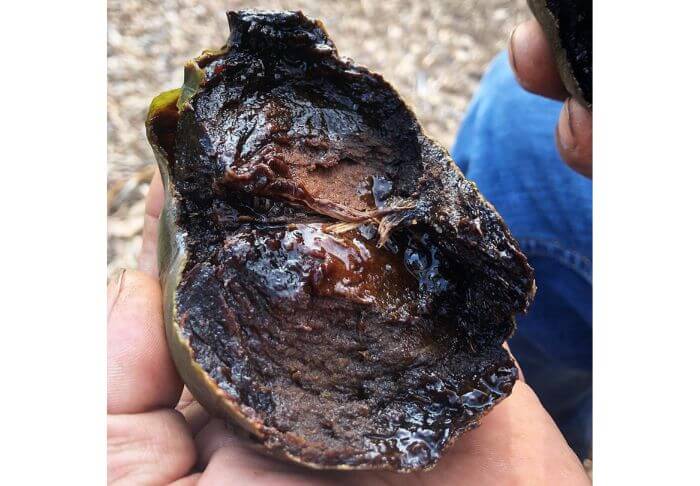
source: exotica_rare_fruit_nursery
Firstly, check for any wrinkles or creases on the skin of the fruit. If there are wrinkles present, then this indicates that the black sapote is ripe and ready to eat. You can also gently press your thumb against the skin of the fruit – if it gives slightly, then it’s likely to be ripe.
Another way to tell if sapote is ripe is by shaking or tapping it lightly with your fingers. If you feel a slight give in the flesh of the fruit, then it’s probably ready for consumption. Be careful not to shake too hard or tap too forcefully as this may cause damage to unripe fruits.
Where does black sapote fruit come from?
Originally from Mexico and Central America, this fruit has now spread to other parts of the world such as Australia and Southeast Asia. The black sapote fruit is about the size of an orange and has a green skin that turns brown when it ripens.
If you’re interested in growing this exotic fruit yourself, here are some tips to help you cultivate sapote successfully.
Firstly, it’s important to choose the right location for your black sapote tree. These trees thrive in warm climates and prefer well-drained soil with plenty of organic matter.
Find a spot that receives full sun or partial shade throughout the day. Next, ensure proper spacing between trees as they require adequate room for their roots to spread out. Additionally, consider providing wind protection if you live in an area prone to strong gusts.
Nutritional facts
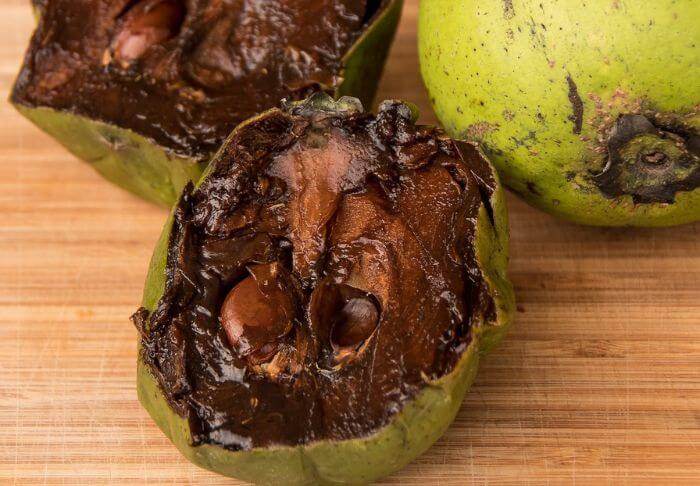
This fruit has many nutritional benefits owing to its rich composition of vitamins, minerals, and antioxidants. A 100-gram serving of black sapote contains only 60 calories and is an excellent source of dietary fiber.
Black sapote also contains high levels of vitamin C. The fruit is also loaded with potassium. Additionally, this fruit provides small amounts of iron, calcium, magnesium, phosphorus, zinc, and copper.
Despite being relatively low in fat content (less than 1g per serving), black sapote delivers essential fatty acids such as omega-3 and omega-6 fatty acids. With its impressive nutritional profile coupled with its delicious taste reminiscent of chocolate pudding when ripe – sapote surely adds a tasty option to one’s diet while providing numerous benefits.
When is Black sapote fruit in season
Black sapote fruits are in season from September to December in most regions where they grow. This period coincides with the rainy season in Mexico and Central America, which provides ideal growing conditions for the tree.
However, some varieties of sapote may be available from June to August depending on the climate of the region.
The timing of black sapote’s harvest depends on various factors such as location, weather patterns, soil fertility, cultivation practices, and tree age. In general, growers wait until the fruits have turned completely black before harvesting them.
Once picked from the tree, they can be kept at room temperature for several days or refrigerated for up to two weeks before consumption or processing into desserts or drinks.
What does Black sapote fruit taste like?
The taste of black sapote is often compared to chocolate pudding or custard due to its rich and sweet flavor profile. It has a mild sweetness with hints of coffee and caramel flavors. Some even describe it as having a slight nutty taste similar to avocado.
Ways to eat sapote
1. Fresh: The simplest way to enjoy sapote is to eat it fresh, just like any other fruit. Simply cut and scoop the flesh. It has a custard-like texture and tastes similar to chocolate pudding.
2. Baked goods: You can also use black sapote in baked goods such as cakes and muffins. Its sweet flavor makes it an excellent substitute for sugar or chocolate in recipes, while its creamy texture adds moisture to baked goods.
Sapote drinks
Sapote smoothie
Ingredients
-1 black sapote
– 1 banana
– 1 cup almond milk
– 1 tablespoon honey (optional)
– Ice cubes
Instructions:
1. Peel the black sapote and remove the seeds.
2. In a blender, combine the pulp, banana, almond milk, honey (if desired), and a handful of ice cubes.
3. Blend until smooth
4. Pour into glasses and serve immediately. Enjoy your refreshing black sapote smoothie!
How to store:
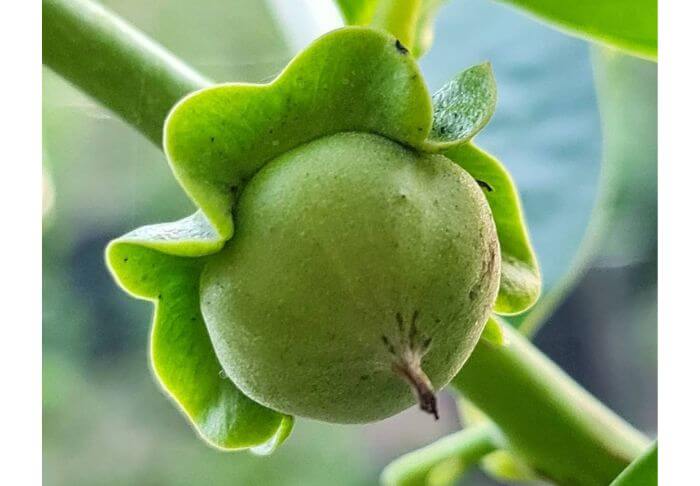
source: mytropicalfruitlife
First, it is important to choose ripe black sapote fruit. Look for fruits that are soft to the touch and have a deep brown or black color.
Once you have selected your fruit, it is best to store it in the refrigerator in a plastic bag or container. Make sure the fruit is not crushed or overly bruised.
If you are not planning on consuming your sapote immediately, you can also freeze it for later use. Simply peel and seed the fruit, then place it in an airtight container or freezer bag before freezing. Frozen sapote can be used in smoothies or other recipes calling for pureed fruit.
If you have excess sapote that you cannot consume or freeze, consider dehydrating it into chips or leather for longer storage.
Cut the fruit into thin slices and lay them out on a dehydrator tray until they are fully dried out and crispy. Store these chips in an airtight container at room temperature for up to several months.
Where to get sapote
If you are interested in trying out black sapote, you can find it in specialty grocery stores or online retailers. In the United States, Florida and California are the top producers of this fruit so you may have more luck finding it in these states. Some online retailers offer fresh or frozen sapote fruit as well as pulp or puree that can be used in various recipes.
Another option is to visit your local farmer’s market. Many farmers grow exotic fruits like black sapote and sell them directly to consumers at these markets. This way, not only will you get to taste the fruit but also support local agriculture.
is Black sapote the same as permission
Black sapote and persimmon are two different fruits despite their similarities in appearance. The black sapote, also known as the chocolate pudding fruit, is a tropical fruit native to Mexico and Central America.
It has a green skin that turns brownish-black when ripe and its flesh is soft, creamy, and brown in color with a mild flavor reminiscent of chocolate pudding. On the other hand, persimmon is an orange-colored fruit with a sweet and slightly tangy flavor.
While both fruits belong to the same family (Sapotaceae), they have distinct differences in taste, texture, and nutritional value. Black sapote is high in vitamin C while persimmon contains vitamin A. Persimmons are also higher in fiber compared to sapote.
In conclusion, although they may look alike on the outside at times – especially when unripe – black sapote (aka chocolate pudding fruit) and persimmons are not the same thing but rather two unique types of fruits each with their own set of benefits!
Hi There,
My name is Jenny. I’m the Chief Editor at Try Green Recipes and besides making yummy and healthy foods for my kids, grandkids, and friends. I’m new to the blogging world but I believe what I have to share is unique and will bring joy to your home. If you are adventurous and want try something tasty, let’s get started.
